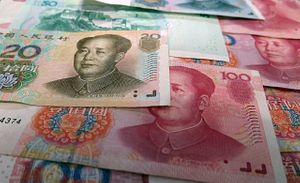The Belt and Road Summit, which brings together government officials, business executives, and industry experts to discuss China’s ambitious Belt and Road Initiative, took place this week in Hong Kong. The most cited figures for the initiative’s total investments range around the $1 trillion mark. In comparison, even the Marshall Plan’s $13 billion — about $130 billion in current dollars — appears paltry.
The Belt and Road Initiative’s importance to Beijing’s foreign policy, and its expected impact on world investment and trade patterns, have been described ad nauseam by western pundits over the past five years. Much of the analysis is overblown. Beijing’s plans for the initiative have been vague and inconsistent. Furthermore, China’s enterprises and policy banks often bite off more than they can chew in politically risky countries. Many Chinese-financed and constructed projects get discussed for years but never materialize. Finally, China already represents the most important source of imports for about three quarters of the Belt and Road countries, and is the most important trading partner for just under half of them. Therefore, the initiative is unlikely to drastically alter global trade patterns.
While the initiative might not radically tilt global patterns of trade and investment in China’s favor, it could help achieve one of Beijing’s key long-term goals, the internationalization of the Chinese RMB. This process, which would see the RMB become a more freely traded currency on world markets and a more widely acceptable form of payment to settle trade deals, is at the heart of Beijing’s economic and political ambitions.
Beijing is seeking to internationalize the redback for a mix of four reasons. First, it wants to mitigate China’s exposure to macroeconomic currency risks in the long term. Second, it wishes to facilitate the trade activities of its national firms — the main driver of China’s recent growth. Third, Beijing wants to use the RMB’s internationalization as a motivating force to drive domestic reforms that might otherwise be difficult to sell domestically, such as the freeing up of its capital account. Finally, China hopes to benefit from the prestige and clout that comes with having a global currency.
China’s economy has increased 35-fold in size since 1978. Continuing to fuel high levels of growth, which is paramount to maintaining political stability, leaves the Chinese government with virtually no margin of error when charting an economic course. One key area in which Beijing’s plans have gone awry is the internationalization of the RMB, which has been a non-event. The RMB’s adoption rates are low — at well under 2 percent of international payments — and stalling. RMB deposits in Hong Kong have fallen by almost half since their peak in late 2014.
This represents a blow for the RMB’s largest offshore center, which is involved in about 70 percent of RMB-denominated foreign payments, and expected to yield much of the gains of Beijing’s efforts to internationalize its currency. The Belt and Road Initiative could be the catalyst needed to kick the internationalization of the RMB into high gear after years of anemia. The initiative’s intended trillion dollars in investments into countries that already enjoy substantial trade with China could spur more RMB-denominated transactions.
An important — and often overlooked — means by which Beijing has been promoting the internationalization of the RMB is by signing bilateral swap agreements with foreign central banks. As of 2015, the People’s Bank of China had signed over 30 such agreements, for a total value of $468 billion. These swaps allow the People’s Bank of China to make the redback available to other countries while maintaining tight controls over its use abroad. Greater economic interdependence with China — what the Belt and Road Initiative seeks to generate — has been shown to increase the likelihood of signing such agreements with Beijing.
The political pageantry that has accompanied the Belt and Road Initiative also suggests that Beijing is seeking to swoon foreign governments into closer diplomatic ties. Research shows that countries that are more closely aligned with China politically are more likely to turn to the redback as a viable external currency.
Another key factor that could help the internationalization of the RMB is taking place across the world. The U.S. elected a president who has previously suggested that the U.S. could simply print its way out of debt, and that it should retreat from many of its international obligations. If the “pull” effect from China’s charm offensive through the Belt and Road Initiative isn’t enough to make the RMB an attractive currency for other countries, the “push” effect emanating from the White House could certainly help.
A truly international RMB might not mean much for the balance of power between the US and China in the short term. However, it would represent an important strategic win for Beijing in the long term. The RMB’s internationalization would present leaders in Beijing with new outward-looking economic strategies and give China more prestige in world politics. The man in the Oval Office sees China as a manufacturing center that undercuts American-made goods, but Beijing’s ambitions extend well beyond that, and the internationalization of the RMB would help it get closer to that goal.
David G. Landry is a doctoral candidate in international development at the Johns Hopkins University School of Advanced International Studies. He has consulted for the World Bank and the Natural Resource Governance Institute.
Heiwai Tang is assistant professor of international economics at the Johns Hopkins School of Advanced International Studies and research fellow of the Federal Reserve Bank of Dallas, the Center of Economic Studies and Ifo Institute (CESIfo), and the Globalization and Economic Policy Center. He is a regular consultant to the World Bank.

































